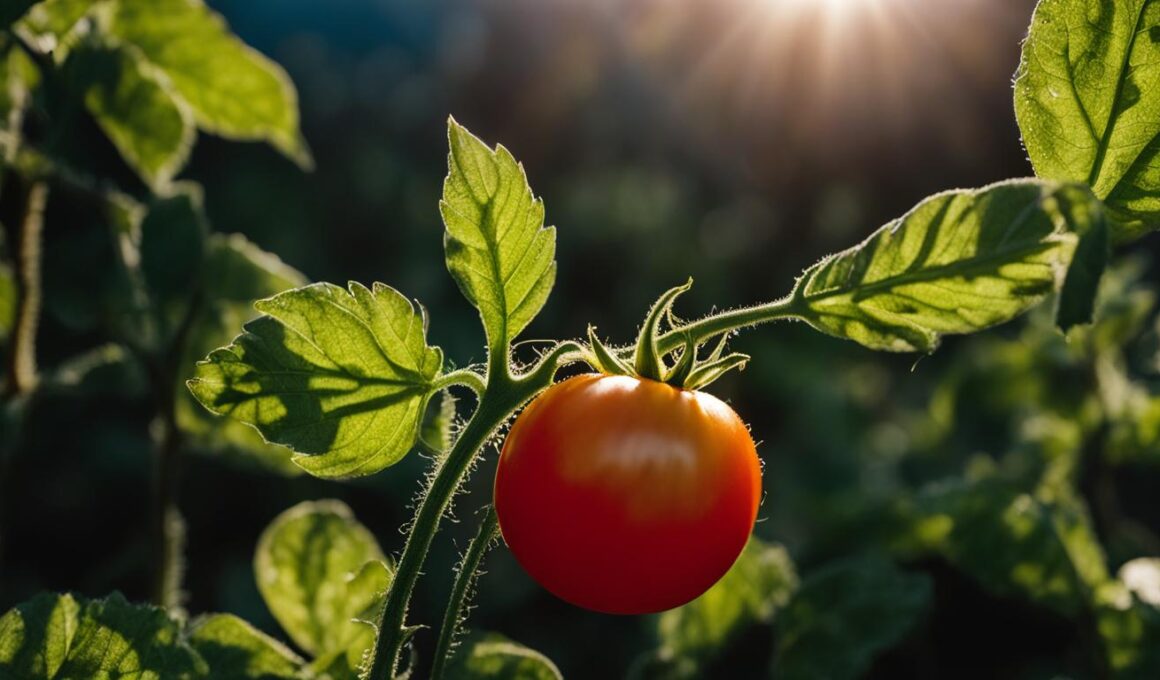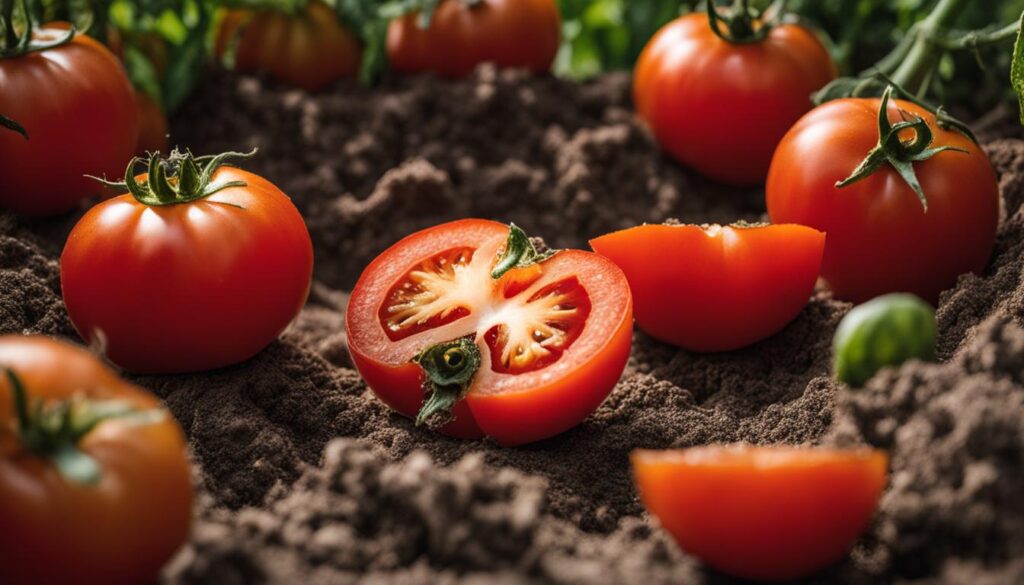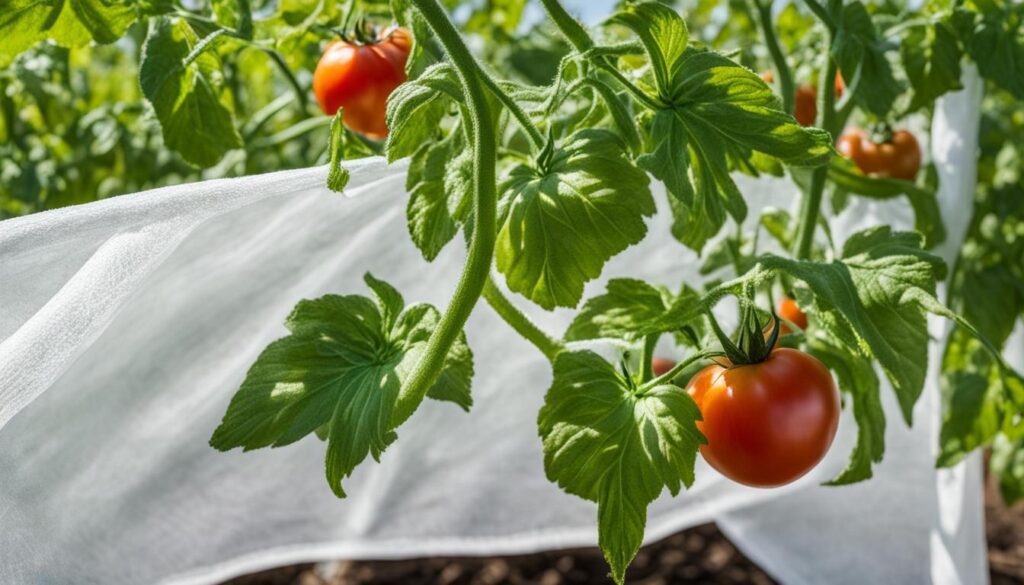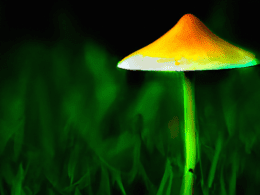Tomatoes are plants that require plenty of sunlight, but excessive exposure to the sun can lead to sunscald, which is akin to a sunburn. Sunscald is more prevalent in hotter regions and can affect both the fruit and leaves of the tomato plant. Symptoms of sunscald include white or brown spots on the leaves and blotchy white, yellow, or gray patches on the fruit. Sunscald can be prevented by providing shade to the plants during the hottest parts of the day, avoiding over-pruning that exposes the fruit to direct sunlight, and selecting tomato varieties that are less susceptible to sunscald.
Key Takeaways:
- Excessive exposure to sunlight can lead to sunscald in tomatoes, affecting both the fruit and leaves.
- Prevent sunscald by providing shade during the hottest parts of the day.
- Avoid over-pruning the tomato plants to protect the fruit from direct sunlight.
- Choose tomato varieties that are less susceptible to sunscald.
- Monitor for signs of sunscald and take appropriate actions to protect the plants.
Understanding Sunscald in Tomatoes
Sunscald in tomatoes is a condition that occurs when the plants are exposed to excessive direct sunlight, particularly during periods of extreme heat. While tomatoes require around six to eight hours of sunlight each day for optimal growth, too much sun and heat can lead to sunscald. This phenomenon is more commonly observed in regions with longer days and hotter weather, such as the southern parts of the United States.
Excessive direct sunlight exposure can cause sunscald in both the leaves and fruit of tomato plants. The impact of extreme heat on tomatoes can disrupt their physiological processes, leading to damage. Symptoms of sunscald include white or brown spots on the leaves and blotchy white, yellow, or gray patches on the fruit.
In addition to direct sunlight exposure, over-pruning tomato plants can also contribute to sunscald. When you prune tomato plants excessively, you remove the foliage that naturally provides shade for the fruit. This exposes the fruit to direct sunlight, increasing the risk of sunscald.
Effect of Over-Pruning on Sunscald
“Over-pruning tomato plants can remove the natural shade provided by foliage, increasing the risk of sunscald.” – Gardening Expert
Impact of Extreme Heat on Tomatoes
“During periods of extreme heat, tomato growth slows down, making them more susceptible to sunscald.” – Agricultural Scientist
Choosing the Right Tomato Plant Variety
When it comes to preventing sunscald in tomatoes, choosing the right tomato plant variety can make a significant difference. Some tomato varieties are more resistant to sunscald and are better adapted to hotter regions. By selecting the right variety, you can minimize the risk of sunscald and ensure healthy tomato growth.
One important consideration is the suitability of beefsteak tomatoes in hot climates. While beefsteak tomatoes are popular for their large size and juicy flavor, their larger fruits can be more prone to direct sunlight exposure. In exceptionally hot summers, the larger surface area of beefsteak tomatoes increases the chances of sunscald. Therefore, it is advisable to opt for smaller-sized tomatoes, such as indeterminate cherry tomatoes, which are less susceptible to sunscald in hot climates.
There are also specific tomato varieties that are bred to be more sunscald-resistant. Varieties like Red Snapper and Hossinator have been developed with minimal sunscald in mind and thrive in hotter regions. These varieties exhibit better tolerance to direct sunlight and are less likely to develop sunscald symptoms on their leaves and fruit.
| Tomato Variety | Sunscald Resistance | Best for Hot Climates |
|---|---|---|
| Red Snapper | High | Yes |
| Hossinator | Medium | Yes |
| Beefsteak | Low | No |
| Indeterminate Cherry | Medium | Yes |
Choosing disease-resistant tomato varieties is another important factor in minimizing the risk of sunscald. Look for varieties that are labeled with a “V” or “F” for resistance to wilt diseases. These disease-resistant varieties have better overall health and are less susceptible to conditions like sunscald.
By selecting the right tomato plant variety, you can increase your chances of successful tomato growth while reducing the risk of sunscald. Consider the climate and specific needs of your garden, and choose varieties that are known for their sunscald resistance and suitability to hot climates.
Prevention Tips for Sunscald in Tomatoes
To prevent sunscald in tomatoes, there are several effective strategies that you can implement in your garden. These tips will help protect your tomato plants from excessive sun exposure, ensuring healthy growth and preventing sunburnt leaves.
1. Provide Shade with Shade Cloth: Using shade cloth is an excellent way to create a protective shield against intense sunlight. This specially designed fabric can be placed over your tomato plants during the hottest parts of the day, providing them with much-needed shade. Opt for shade cloth with a coverage percentage that suits your specific climate and the intensity of sunlight in your region.
2. Follow Proper Pruning Guidelines: Pruning is an essential practice for tomato plants, but it’s important to do it correctly to avoid exposing the fruit to direct sunlight. Avoid excessive pruning that removes too much foliage, as this can increase the risk of sunscald. Instead, follow proper pruning guidelines to maintain a balance between foliage and fruit, ensuring that the fruit is adequately protected by the leaves.
3. Remove Sunscalded Fruit: If you notice any sunscalded tomatoes in your garden, it’s best to remove them promptly. While these fruits may still be edible, they can affect the overall health and taste of your harvest. To prevent any potential spread of disease, discard sunscalded tomatoes and focus on protecting the remaining fruit.
Choosing the Right Shade Cloth
When selecting shade cloth for your tomato plants, it’s important to consider the different options available. Here are some factors to keep in mind:
- Percentage of coverage: Shade cloth comes in various percentages of coverage, ranging from 30% to 75%. Choose a cloth with a coverage percentage that suits the sunlight intensity in your area.
- Material: Shade cloth is typically made of polyethylene or similar materials. Look for high-quality, durable fabrics that will provide reliable protection for your tomato plants.
- Installation: Consider how easy it is to install and remove the shade cloth. Look for options that are convenient to use and won’t cause damage to your plants.
By following these prevention tips and implementing shade cloth and proper pruning techniques, you can significantly reduce the risk of sunscald in your tomato plants. Remember to monitor your plants regularly for any signs of sunburn and take necessary actions to protect them from excessive sunlight.
Additional Strategies to Minimize Sunscald Risk
Preventing sunscald in tomatoes goes beyond providing shade and selecting the right tomato varieties. Implementing additional strategies can further minimize the risk of sunscald and ensure healthy tomato plant growth.
Mulching for Tomato Plants
Mulching is an effective technique to protect tomato plants from sunscald and prevent water-related diseases. Applying a layer of organic mulch, such as straw or wood chips, around the base of the plants helps to retain moisture in the soil and regulate soil temperature. This serves as a protective barrier against splashing soil-borne diseases that may reach the foliage, reducing the risk of sunscald and promoting overall plant health.
Preventing Water-Related Diseases
Watering practices can have a significant impact on the development of sunscald and other leaf diseases. Overhead watering can contribute to the spread of fungal and bacterial diseases by splashing water onto the leaves. To prevent water-related diseases, it is recommended to use drip irrigation or soaker hoses. These methods deliver water directly to the root zone, minimizing water contact with the foliage and reducing the risk of sunscald development.
Organic Fungicide for Foliage
Controlling fungal or bacterial diseases on tomato foliage is crucial for preventing sunscald. Using an organic fungicide, such as liquid copper spray, can help control or slow the spread of these diseases. Apply the fungicide according to the manufacturer’s instructions, focusing on the undersides of the leaves where diseases often thrive. Regularly inspecting the plants for any signs of disease and promptly treating them can significantly reduce the risk of sunscald and maintain healthy foliage.
Disease-Resistant Tomato Varieties
Choosing disease-resistant tomato varieties is a proactive measure to minimize the risk of sunscald. Look for tomato varieties that have been labeled with a “V” or “F” for resistance to common tomato diseases like fusarium wilt or verticillium wilt. These resistant varieties have built-in genetic traits that make them less susceptible to diseases, including those that can contribute to sunscald. By selecting disease-resistant tomato varieties, you can enhance the overall health and resilience of your tomato plants against sunscald and other diseases.
| Strategies | Benefits |
|---|---|
| Mulching | Retains soil moisture, regulates temperature, protects against soil-borne diseases |
| Preventing Water-Related Diseases | Minimizes fungal and bacterial diseases on tomato leaves |
| Organic Fungicide | Controls or slows the spread of fungal and bacterial diseases on foliage |
| Disease-Resistant Tomato Varieties | Reduces the risk of sunscald and enhances overall plant health |
Can Preventing Tomato Sunburn Leaves Help Avoid Root Rot in Plants?
Preventing tomato sunburn leaves can indeed help avoid root rot in plants. One effective method is using a root rot peroxide treatment to protect the plant roots from fungal infections. By keeping the leaves healthy and free from sun damage, the plant is better equipped to fight off root rot.
Conclusion
Preventing tomato sunburn leaves and minimizing the risk of sunscald is crucial for healthy tomato plant growth and an abundant harvest. By providing shade to the plants, avoiding excessive pruning, selecting suitable tomato varieties, and implementing preventive strategies like mulching and using organic fungicides, you can ensure optimal fruit production and reduce the chances of sunscald.
Remember to pay attention to the specific needs of your tomato plants, monitor for any signs of sunscald, and take appropriate actions to protect them from the harmful effects of excessive sunlight. Taking these precautions will help you maintain healthy tomato plants and enjoy a bountiful crop of delicious tomatoes.
Following these tips for protecting tomato plants will lead to healthier tomato growth and more successful gardening. With proper care, you can prevent tomato sunburn, ensure your plants thrive, and ultimately enjoy the fruits of your labor.
FAQ
What is sunscald in tomatoes?
Sunscald in tomatoes is a condition where the plants are exposed to excessive direct sunlight, especially during periods of extreme heat. It can cause white or brown spots on the leaves and blotchy white, yellow, or gray patches on the fruit.
How does excessive sunlight exposure lead to sunscald?
Tomato plants require around six to eight hours of sunlight each day, but too much sun and heat can lead to sunscald. This condition is more common in regions with longer days and hotter weather, such as the southern parts of the United States.
Can over-pruning tomato plants contribute to sunscald?
Yes, over-pruning tomato plants can remove the foliage that provides natural shade for the fruit, increasing the risk of sunscald. It is important to follow proper pruning guidelines to promote optimal fruit growth while ensuring the fruit is not excessively exposed to direct sunlight.
Are there tomato varieties that are less susceptible to sunscald?
Yes, some tomato varieties, such as Red Snapper and Hossinator, are bred to have minimal sunscald and thrive in hotter regions. It is advisable to avoid planting larger beefsteak tomatoes in areas with exceptionally hot summers, as their larger size increases the chance of direct sunlight exposure.
How can I prevent sunscald in tomatoes?
Providing shade to the plants during the hottest parts of the day can be beneficial. This can be achieved by using shade cloth that offers various degrees of coverage. Additionally, following proper pruning guidelines and selecting disease-resistant tomato varieties can help minimize the risk of sunscald.
Can sunscalded tomatoes still be consumed?
Sunscalded tomatoes are still edible as long as there is no mold or deep cracks. However, it is advisable to remove the affected parts before consuming them.
What are some additional strategies to minimize the risk of sunscald in tomatoes?
Applying mulch around the tomato plants can act as a protective barrier against soil-borne diseases. Avoiding overhead watering and using drip irrigation or soaker hoses can help reduce water-related diseases on the leaves. Using an organic fungicide, such as liquid copper spray, can also help control or slow the spread of fungus or bacterial diseases on the foliage.
Why is it important to select disease-resistant tomato varieties?
Disease-resistant tomato varieties, labeled with a “V” or “F” for resistance to wilt diseases, can be beneficial in reducing the likelihood of sunscald. These varieties have built-in resistance to common tomato diseases, minimizing the risk of plant stress and sunscald.











